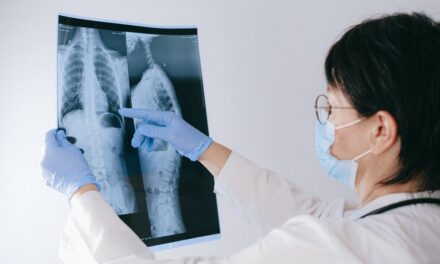Summary of this paper
Our Machine-Learning algorithms scan the text for the most important phrases or passages. These highlights, alongside their respective section titles, are shown below.
Section 1
A sensitive and specific breathalyzer for D9-tetrahydrocannabinol (THC) is being developed to determine recent cannabis intake.
Cannabinoid Markers
Anti-doping: drug testing in sports to deter athletes from ingesting prohibited drugs to achieve an unfair advantage in competition. Cannabinoids: a class of closely related compounds of the cannabis plant including D9tetrahydrocannabinol (THC, the primary psychoactive chemical in cannabis), more than 100 other structurally related chemicals in the plant, and the endocannabinoid neurotransmitters produced by the human body and many other living organisms, as well as synthetic cannabinoids produced by clandestine chemists, all of which interact with cannabinoid receptors. Cannabinoid disposition: the movement of cannabinoids from the blood into tissues, urine, feces, and bile, as well as into alternative matrices such as oral fluid, sweat and hair.
Urine Markers
When studying THCCOOH urinary excretion in frequent cannabis users, our laboratory group observed positive urine tests for weeks after last use, making it difficult to determine if individuals were abstaining or relapsing in drug treatment [35]. Studying cannabinoid distribution in frequent cannabis users is difficult because ethical and safety concerns prohibit administering the expected amount and frequency of cannabis taken by this population. Nevertheless, this has led to several studies where every urine sample can be analyzed for THCCOOH and creatinine during sustained abstinence to determine THCCOOH pharmacokinetics in frequent users [36].
Hair Markers
In addition, contamination of hair with THC but not THCCOOH by side-stream smoke was reported [52]. Recently, one study reported that THC, THCCOOH, and the THC precursor, D9-tetrahydrocannabinolic acid A, could all be present in hair samples from non-consuming individuals owing to transfer of cannabinoids from cannabis consumers via their hands, sebum/sweat, or cannabis smoke (e. g., exhaled) [53]. Given the poor incorporation of THC in hair and the possibility of contamination from environmental smoke, THCCOOH is considered to be the best hair marker for identifying cannabis use.
Sweat Markers
In one study, THC was quantified in sweat patches from frequent users during sustained abstinence. In many frequent cannabis users only the patch applied during the week abstinence had initiated was positive for THC, and in other patches that were applied the second, third, and fourth weeks of abstinence patch cannabinoids documented extended excretion of THC. However, no THC was found in test patches following oral ingestion of up to 14.8 mg of THC [54].
Breath Markers
THC was removed selectively from the filter and quantified by LC-MS/MS; breath samples from 18 chronic and 11 occasional cannabis users were examined following smoking of a 6.5% THC cigarette [56]. THC 50 pg/filter was detected up to 4 h after cannabis smoking in frequent cannabis users and for a shorter time in occasional users. Thus, while breath is a good matrix for identifying recent cannabis use, no THCCOOH has been identified in breath [56].
Synthetic Cannabinoid Markers
LC-MS/MS screening for new synthetic cannabinoids in a targeted method is a good approach and an achievable one based on the available instrumentation and personnel resources to identify NPS markers, but this approach is also limited by the time that is necessary to keep analytical methods current with newly marketed synthetic cannabinoid compounds, and by the constant need for new reference standards that may not yet be available [63,64]. Unfortunately, this is almost an impossible task. A different approach utilizes HR-MS and a consistent acquisition program to facilitate the addition of newly introduced NPS [9].
Challenges In Interpreting Cannabinoid Use Findings
Other challenges for interpreting cannabinoid results comprise the windows of cannabinoid detection that vary by the biological matrix tested and the analyte(s) selected for monitoring. In this manuscript we have discussed the importance of recent use markers to identify the timeframe of cannabinoid intake, especially in chronic frequent cannabis users. Blood is considered to be the biological matrix that best reflects ongoing pharmacological effects, but blood cannabinoid concentrations decrease rapidly.
Concluding Remarks
Data on drug delivery through these new methods does not yet exist, making it impossible to know what new markers might be available and how to interpret their concentrations and toxicity. The need for behavioral and biological cannabinoid markers is expanding with cannabis medicalization and legalization. Therapeutic drug monitoring of effective cannabinoid pharmacotherapies will be required in the future when new cannabinoids are proven safe and efficacious.
Outstanding Questions
What are the major factors differentiating cannabinoid pharmacokinetics in frequent and occasional cannabis users?
The Michigan Medical Marijuana Association (MMMA)
Public forums for guests and members of the Michigan Medical Marijuana Association.
This is an open forum related to a variety of topics from legal issues to growing for medical use to strains and more.
LEGAL ADVISORY – Rules, Regulations and laws may have changed after this information was posted. It is up to the reader to research and determine the current status of those items. It is always best to consult an attorney that has experience and is focused on the cannabis industry. One of the most well known law firms in the industry for over 25 years is Komorn Law
Other Posts
- Taxes and School Policy in New State Budget
- Michigan lawmakers looking to revive “junk science” roadside drug testing
- No Sheet Sherlock
- You likely won’t be told if your weed failed mold test.
- We Know What You Did – Last Time We Looked
Tags
2020 2021 Adult Recreational Use Adult Use breathalyzer cannabis Cannabis Regulatory Agency Caregivers coronavirus CRA Driving drugged driving DUI Education educational Event Federal Hemp Lab Scandal LARA LARA-BMR Laws legalization Marijuana medical marijuana michigan Michigan Laws Michigan Legislature Michigan News MMFLA MMMA MRA MSP News Ohio Patients Recreational science taxes Traffic Laws USA USA News Viridis Labs world news Your Rights









